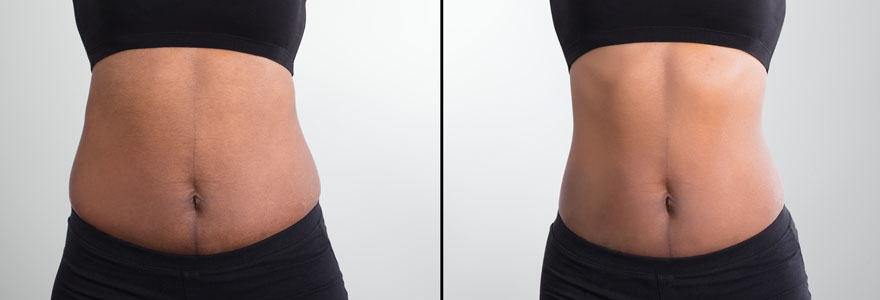
Abdominoplasty
The skin and muscles of the abdominal wall can be stretched during pregnancy and weight gain. This decreased the elasticity of the skin, causing difficulty with clothing and may look unattractive. Exercising and diets may reduce the appearance of loose skin and fat, but most patients find it difficult to return to the body shape they once had or desire. An abdominoplasty (or a “tummy tuck”) can tighten the muscles and remove the excess skin and fat from the abdomen, making your body more toned and contoured.
Abdominoplasty is suitable for both men and women who are in overall good health. Not to be confused with liposuction (surgery used to remove excess fat deposits from the body), patients may opt to have liposuction surgery as part of an abdominoplasty.
Women have had multiple pregnancies which resulted in the muscles and skin stretching around the stomach, may find that the procedure is extremely useful when used to tighten those muscles and reduce that skin. This procedure is also the best alternative for men or women who were obese at one point in their lives and still have excessive fat deposits and loose skin in the abdominal area.
The surgery can take up to five hours to complete, depending on the desired result, and the complexity of a particular situation may also determine whether it is completed as an inpatient or outpatient procedure.
There are two options for an abdominoplasty, namely complete abdominoplasty and partial abdominoplasty.
Complete abdominoplasty is the best solution for patients who require more corrections. During this procedure, the abdomen will be cut from hipbone to hipbone, and incisions will be made in the lower abdomen at the same level as the pubic hair. The contours of the skin, tissue and muscle will be manipulated, and a drainage tube may be placed under the skin and only removed after a few days.
A partial abdominoplasty –or mini-abdominoplasty – is often performed when a patient has fat deposits that are located below the navel, requiring shorter incisions. During this procedure, the skin is separated from the line of incision and the belly button.
It is important to avoid consuming any blood-thinning tablets for two weeks before and after the surgery, as the tablets can have an adverse effect on bruising. If you are a smoker, it is imperative that you stop smoking for four weeks before surgery and two weeks after, to avoid restricting the circulation of the skin. This applies to all smoking products, including inhalers and smoking prevention products.
Also, ensure that you arrange for someone to drive you home after surgery, as you will be unable to drive yourself.
